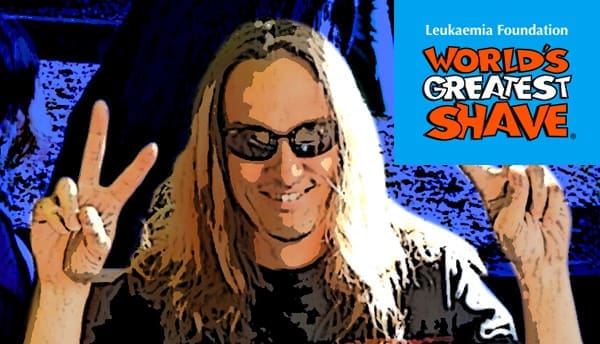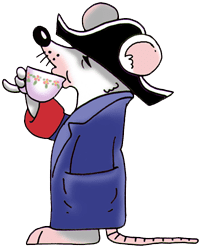Mouse vs. Leukaemia
Mouse vs. Leukaemia
In this issue
Feature
Welcome Roger Askew
Latest publications
Frank’s blog
Geneoz news
Mouse vs. Leukaemia
Did you know that mice and humans share nearly the same genetic makeup? Out of 4,000 genes that have been studied, only about 10 differ between the species. That’s why the mouse makes such a great and important medical research model. Thanks to the mouse, diseases like blood cancers can be studied extensively and/or cured.
This month we are focusing on leukaemia, lymphoma, myeloma and other blood related cancers in honour of Frank’s Great Shave for the Leukaemia Foundation coming up in June. We all know someone, either just an acquaintance or a family member (or maybe even you) that has dealt with a blood cancer in some capacity. Here are some facts regarding blood cancers around the world:
- The Leukaemia Foundation in Australia reports that 31 people each day will be given the diagnosis of leukaemia, lymphoma, myeloma or a related blood cancer.
- Approximately 11,700 people are diagnosed with lymphoma in the UK each year, according to the Leukaemia & Lymphoma Research Organisation.
- The Leukemia & Lymphoma Society reports that one person is diagnosed with a blood cancer approximately every three minutes in the United States.
- Leukaemia is the most common form of childhood cancer.
Research using mouse models of blood cancers has allowed doctors to make great advances in treating these types of cancers. For example, acutepromyelocytic leukaemia (APL) was once the most deadly form of leukaemia and is now one of the most treatable forms. This is due to research involving a mouse model. Research is also conducted using immunodeficient mice engrafted with human leukaemia cells, along with many other transgenic, knockout, and knock-in mice. These are just a few examples of how mice have helped in this fight.
For more information on Ozgene mouse models, please see Ozgene services.
 Roger Askew – Our man in Boston
Roger Askew – Our man in Boston
We are excited to welcome Dr Roger Askew to the Ozgene team as our Principal Scientist in North America, based in Boston, MA. Roger comes to us with twenty years of industry experience developing and phenotyping genetically engineered models (GEMs) at Wyeth Pharmaceuticals, Merck & co., and Biogen. Roger looks forward to getting to know the Ozgene clients, old and new, and discussing your GEM and phenotyping needs.
Latest publications
Transgenic Res. 2015 Apr 23.
Inductively coupled mass spectrometry analysis of biometals in conditional Hamp1 and Hamp1 and Hamp2 transgenic mouse models.
Lu S, Seravalli J, Harrison-Findik D. – University of Nebraska Medical Center, NE, USA. [read]
“I selected Ozgene because of the reputation, scientific quality and compatible prices. The best aspects of Ozgene service were professionalism, friendly staff and regular updates on work progress.”
– PProf. Dee Harrison-Findik, University of Nebraska, USA
Nat Commun. 2015 Apr 20.
Association of CLEC16A with human common variable immunodeficiency disorder and role in murine B cells.
Li J, Jørgensen SF, Maggadottir SM, Bakay M, Warnatz K, Glessner J, Pandey R, Salzer U, Schmidt RE, Perez E, Resnick E, Goldacker S, Buchta M, Witte T, Padyukov L, Videm V, Folseraas T, Atschekzei F, Elder JT, Nair RP, Winkelmann J, Gieger C, Nöthen MM, Büning C, Brand S, Sullivan KE, Orange JS, Fevang B, Schreiber S, Lieb W, Aukrust P, Chapel H, Cunningham-Rundles C, Franke A, Karlsen TH, Grimbacher B, Hakonarson H, Hammarström L, Ellinghaus E. – USA, Norway, Germany, Sweden, and UK. [read]
J Neurochem. 2015 Apr 11.
Drebrin depletion alters neurotransmitter receptor levels in protein complexes, dendritic spine morphogenesis and memory-related synaptic plasticity in the mouse hippocampus.
Jung G, Kim EJ, Cicvaric A, Sase S, Gröger M, Höger H, Sialana FJ, Berger J, Monje FJ, Lubec G. – Medical University of Vienna, Austria. [read]

Frank’s blog – I’m shaving it off!
That’s right, you read that correctly. I am shaving off my hippie hair! I may not even recognise myself once it’s done, let alone anyone else. That is beside the point though. You probably want to know the “why” behind this decision so let me explain.
 Geneoz news – Step-By-Step
Geneoz news – Step-By-Step
Geneoz has been designed to work together with Step-By-Step (SBS) instructions. SBS’s provide clear, visual instructions, show what is expected, and what a good job looks like. The SBS’s give even the new employees certainty that they are doing the processes as required. Ozgene is planning to offer SBS as part of Geneoz or as a separate tool for standardising processes and training new employees.

 Roger Askew – Our man in Boston
Roger Askew – Our man in Boston Geneoz news – Step-By-Step
Geneoz news – Step-By-Step